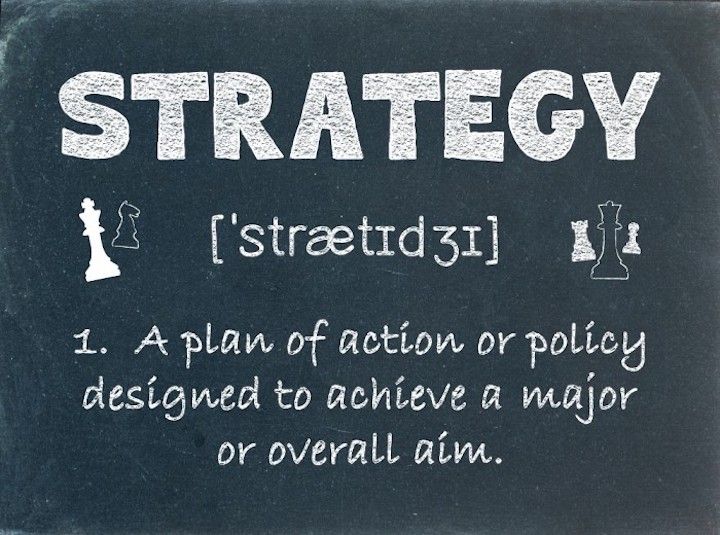
What is Portfolio Management?
Table of Contents
What Is Portfolio management?
An organization has several projects and programs that are all geared towards achieving business success, or, at least, to bringing in revenue, profit and other resources that can help a company thrive. But what if an organization fails to execute and deliver on these projects and programs? The consequences can be dire. This is where portfolio management comes in. In a nutshell, portfolio management is a process that ensures an organization is able to leverage project selection and execution, achieving strategic objectives, in the process. It also brings together one or more project portfolios, and allow for centralized management to reach strategic objectives. Portfolio management is considered as a link between strategy and implementation of a project. But what is a portfolio, and how is it different from programs and projects? Where does portfolio management come into the picture? Read on and find out.
Content Overview
The purpose of this article is to discuss in-depth what portfolio management is really all about, including its various methods, technologies, resources and other aspects that lead to project success or failure. Discussed herein are:
- Definition of Portfolio
- Difference of Portfolios from Programs, and Projects
- Definition of Portfolio Management
- The Link between Portfolio Management and Organizational Strategy
- Impact of Linking Portfolio Management with Organizational Strategy
- Implementation of Portfolio Management
- Role of a Portfolio Manager
- Role of a Project Management Office in Portfolio Management

What is portfolio?
It is a collection of projects grouped together to facilitate centralized and effective management to achieve business strategic objectives. It can also include programs and other operations that may share similar objectives or are necessarily interdependent. Components of a portfolio, however, must be quantifiable so portfolio managers are able to measure, rank and prioritize each component as specified in the portfolio management processes. It also serves as a representation of its selected components, in the same way that a portfolio best describes what an artist is capable of, for example. The components within their portfolio will give an insight as to the medium they know how to use, and the type of artwork they can deliver. In portfolio management, a portfolio also reflects organizational strategy and objectives.
Common characteristics of a portfolio
- Consists of a set of past, current, and future/planned components
- Exists for a longer term, what with new projects rotating into it
- Lacks a defined beginning and end
- May contain sub-portfolios
- Must be linked to organizational strategy
There could be more than one portfolio within an organization, with each one designed to address unique objectives and strategies. Even proposed initiatives are structured within portfolios, with each component going through the same level of evaluation and selection, and must be authorized. In order to leverage these components and/or sub-portfolios, portfolio management is essential, and must include various activities to achieve strategic business objectives. These include:
- To identify and align organizational priorities
- Determine portfolio performance management and portfolio governance framework
- Measure value/benefit
- Make investment decisions
- Managing portfolio resources, portfolio communication and portfolio risk
Most importantly, a portfolio must be aligned with organizational strategy. As it is intended to represent an organization’s intent, progress and the direction it wants to take, it should provide a valuable and beneficial answer to the question of why a work/project is undertaken.

What makes portfolios difference from programs, and projects?
Based on its definition, a portfolio is like the tree of a family tree, which holds together different components, including programs and projects. Programs, along with their sub-programs, operations and projects, are grouped together in one portfolio, and are managed to support the portfolio in a coordinated manner. For a project, program or other works to be a component of a portfolio, however, they must meet certain criteria.
- Aligns with the goals and objectives of an organization
- Represents an investment planned or made by an organization
- Must have common features with other programs or projects, so they can be grouped together in one portfolio and managed effectively
- Must share and compete for resources
- Must be measured, ranked and prioritized

What is portfolio management?
Portfolio management is the process of managing one or more portfolios in a coordinated, effective and centralized manner to achieve organizational objectives and strategies. It includes interrelated processes that an organization selects, evaluates, allocates internal resources with, and prioritizes to ensure strategies align with an organization’s values, vision and mission. While programs focus on achieving a specific set of benefits, and projects focus on creating specific deliverables, portfolio management ensures that a relationship between the two are identified and allocated with resources accordingly. Organizational functions and operations may also be affected by portfolio management. Suffice to say that there is a give-and-take relationship between an organization’s functional group and portfolio management.
The former may be stakeholders and sponsors of the portfolio components, while the latter can impact functional groups’ daily operations. This is especially true if objectives of a portfolio are achieved. Decisions made in portfolio management may also impact operational budget and the day-to-day organizational activities. Remember that resource allocation of portfolio components is often a direct result of portfolio management decisions, while deliverables and processes used by operations management are usually outputs of components in a portfolio. This underscores the need for portfolio managers to take into account operations and organizational functions to realize the full value of portfolio components.
Portfolio management also brings to the table:
- Valuable information to alter or support investment decisions and organizational strategies
- An opportunity for governing bodies to achieve specific outcomes by making the right portfolio management decisions
- Balance the conflicting demands of projects and programs

What is the link between portfolio management and organizational strategy?
An organizational strategy is a plan that outlines the goals, actions and policies that will help an organization focus and move in the right direction. It also defines the methods and means to achieve goals through ongoing organizational activities or projects and programs. How else is a goal attained, if there are no strategies developed to ensure work is executed properly and errors are prevented? Part of the strategic plan is to define how core competencies and strengths can be used to effectively manage resources, capitalize on opportunities, reinforce focus on activities critical to the overall operations, manage stakeholder value, minimize threats and risks, and respond to changes in the market, and regulatory and legal environments.
Along with organizational objectives, strategy is translated into a set of initiatives influenced by market dynamics, competitor plans and actions, government regulations, shareholders, customer and partner requests, and other factors. In some organizations, program and project management and operations are under a specific portfolio. This makes portfolio management a way to bridge the gap between organizational strategy and operations, which include program and project management. It also helps an organization leverage project selection and success, while ensuring it remains competitive in a rapidly changing environment. This is why, by linking strategy to portfolio management, balance in the use of resources is achieved, ensuring maximum value in the execution of operational activities, programs and projects.
What are the impacts of linking portfolio management with organizational strategy?
Considering that portfolio management bridges the gap between organizational strategy and strategy implementation, failure to establish a link can have serious consequences. After all, both factors are essential in establishing a plan that is balanced and executable, resulting in accomplishing goals. There are also benefits when portfolio management is linked to organizational strategy.
- Different portfolio components are kept aligned
Although components in a portfolio don’t have to be directly related or interdependent, there should be common features among each component to ensure effective management. But the best way to manage a portfolio is to align its components to one or more strategic objectives. When project managers understand why they are doing the work, and what goals must be achieved, they will stay on track and maintain portfolio strategic alignment. Portfolio management is about achieving a strategic business objective, which can be accomplished when there is a clear understanding of the goals, and when proposals for a portfolio describe how they support the means to attain those objectives.
- Proper allocation of financial resources
Portfolio management decisions can have an impact to the operational budget. This is because different portfolio components require different resource allocations, and portfolio managers must evaluate and prioritize components.
- Proper allocation of human resources
Depending on priority level, a portfolio component may require more or less hiring efforts, capability allocations, scheduling and resource planning. This goes to show that portfolio management can also guide human resource allocation, including development of long-range talent.
- Proper resource allocation
Whether raw materials or equipment, the priority of each component in a portfolio will guide how resources are allocated. Effective portfolio management will ensure that each component’s needs, including constraints, are accounted for.
- Measurable performance of portfolio component
Portfolio management ensures that each component in the portfolio leads to strategic success, which can be achieved when every component’s contribution is measured based on the context of the goal to be satisfied.
- Better risk management
A vital aspect of organizational strategy is to determine how strengths and core competencies can be leveraged to minimize risk. Since portfolio management requires that components are evaluated for risks of any kind, whether internal or external, establishing a link with organizational strategy will help in developing plans to manage portfolio risks.
- Implementation of Portfolio management
Portfolio management is often used at business unit or department level to resolve conflicts, issues, team concerns, and constrained resources. When implemented in a structured manner, it can provide long-term value to an organization. Implementation of portfolio management involves 4 steps – to assess, define, implement and improve the portfolio management process. If an assessment shows that some areas of the process need to be improved, changes must be made.

What is the role of a portfolio manager?
Who better to implement the portfolio management process than portfolio managers themselves? They are equipped with the skills, knowledge and expertise to do the right work. Their primary function is to receive information about a portfolio component’s progress and performance, and then determine how the overall components align with an organization’s strategic goals, before relaying the information to the portfolio management governing body.
Some of their specific tasks include:
- Ensure that portfolio management processes are done on time
- Provide appropriate recommendations or options for when there are discrepancies in portfolio management
- Provide the required information as outlined in the portfolio management process
- Serve as a conduit between portfolio stakeholders and component managers
- Establish and maintain an organization’s portfolio management’s framework, and body of policies and procedures
- Ensure that portfolio components are aligned with strategic business objectives by providing a guide on how to select, balance, prioritize and terminate components
- Support portfolio management processes by establishing and maintaining system and infrastructure for implementation and execution
- Continuously monitor the progress of portfolio components and portfolio management processes, using various metrics and targets, such as net present value, return on investment, and internal rate of return.
In addition, project managers are also responsible for ensuring compliance of legal and regulatory requirements, while supporting senior-level decision making, on top of portfolio management decision making.
What is the role of a PMO in portfolio management?
In an organizational level, a PMO defines and maintains the standards of portfolio management, project or program processes. Status reporting is their most basic function, but they may also execute projects. In portfolio management, a PMO helps in managing portfolio components; develop and maintain the framework and methodologies of a portfolio, program and project; handle communication across components in a portfolio; monitor policy compliance; develop and improve checklist and templates; assist in risk assessment, identification and strategy development; and conduct training in portfolio management skills, techniques and tools. Most of the time, what a PMO can and can’t do in portfolio management will depend upon the needs of an organization and its stakeholders. A PMO can also have a special purpose, depending on what an organization needs.


















